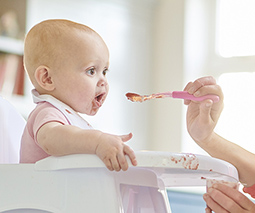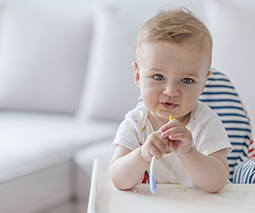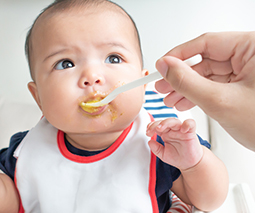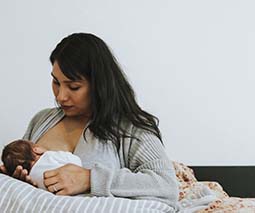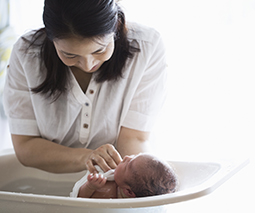Easy and affordable: How to make your own wholesome baby food at home
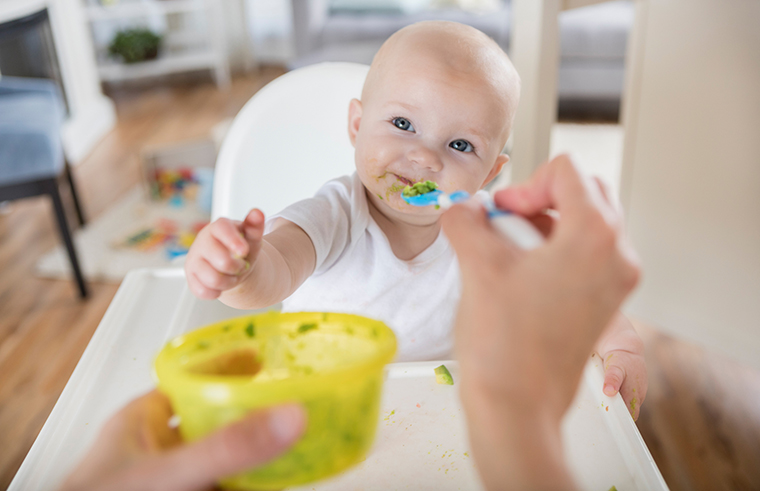
While it may seem convenient to grab a few jars of pre-made baby food, making your own homemade baby food is easier than you think, and it’s definitely more affordable!
Best of all, when you make your own baby food you can choose fresh ingredients and be sure you’re getting your baby’s relationship with food off to a healthy start.
Fresh, local, seasonal
Paediatric nutritionist and founder of Wholesome Child, Mandy Sacher, says, “The first foods we introduce to our babies influences their long-lasting association with food. Offer fresh, local, seasonal foods, go organic if possible, and never add sugar or salt – try to give them the natural flavours and let them get used to the natural flavours first.”
When preparing baby’s first foods, “Either steam or bake, remove hard peels and puree.”
First: single flavours
When you’re first introducing new foods, start with single flavours, like pumpkin or sweet potato alone, before offering a mixture of two or more. Mandy says, “It can take 10-16 times for a baby to get used to a new flavour, but after three or four attempts they may be used to it. If they do keep refusing, put it in the freezer and try again next week. Fussy eaters are born when parents give up trying new foods after one or two attempts.”
So it pays to stick with it and keep introducing the same new food until your baby has become accustomed to the taste. Once your baby has adjusted to the taste of their new food, you can combine it with another flavour.
Next: go big and broad
Freshly prepared veggies and fruits that are starchy and sweet, easy to puree and full of important nutrients, are great first food choices.
Mandy says to start with vegetables like sweet potato or carrot, then move on to combinations like pumpkin and broccoli, and green beans and potato. But there’s no reason to stop there. Mandy says that making your own baby food is the perfect chance to introduce your baby to a wide range of foods. “So go big and go broad rather than limiting it to two or three foods.”
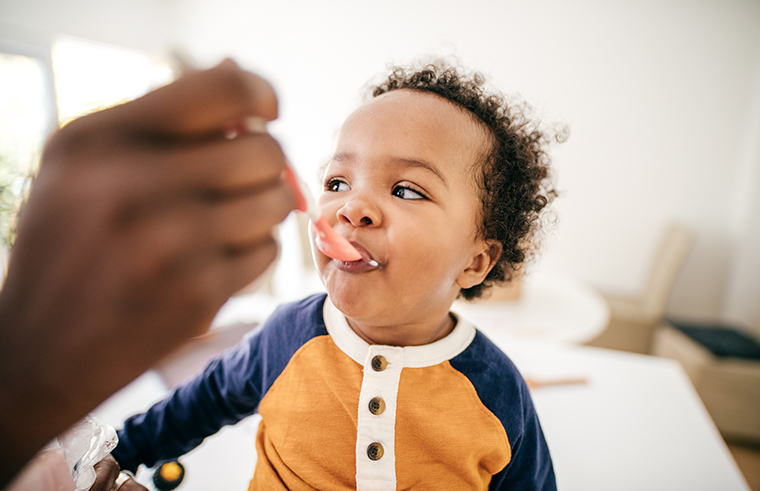
3 simple steps to making your own baby food
- Wash and peel the veg or fruit as needed, then steam. You can use a stovetop steamer like the Wiltshire Classic Steamer. Don’t add any oil, sugar or salt.
- Puree using a food processor or hand-held mixer like the Breville Wizz and Store Food Processor; add a little boiled water, breast milk or formula if needed.
- After you’ve made a batch of food, wait for it to cool, divide it into portions in an ice cube tray or baby food containers like Closer to Nature Weaning Pots and freeze it. Or you can store the food in the fridge for up to 48 hours.
Baby-led weaning
If you choose to opt for baby-led weaning, wait until your baby is at least six months old, then offer him finger-sized pieces of food. And be prepared for the mess! You may want to put down a floor mat or towels around his highchair to catch the spills as your baby explores his new foods. Make sure he has a sturdy highchair like a Childcare 360, which will grow with him.
To prepare baby-led weaning foods, simply bake and cool veggies like sweet potato, pumpkin and broccoli, cut them into finger-sized pieces that he can comfortably hold in his palm, and offer them at mealtime.
Before beginning baby-led weaning, you’ll want to make sure your baby has good head and neck control and good oral motor skills.
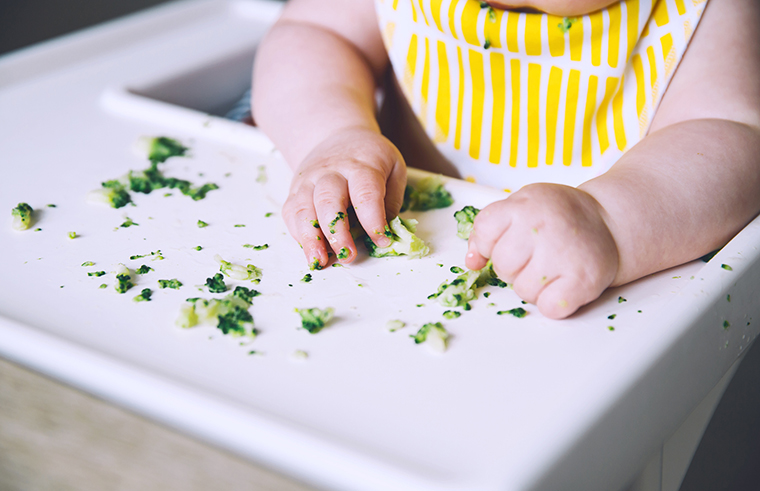
Mandy points out that you can also offer purees alongside finger foods and it’s best not to focus too much on how much or how little your child eats, but rather focus on allowing the experience of food to be a fun and positive one for your baby.
“If you’re excited about the food, they will be too” says Mandy. “We want to lay down fun and healthy foundations for family meals and food.”
This is a sponsored post by BIG W, where you can find everything you need for pregnancy, baby and beyond.
